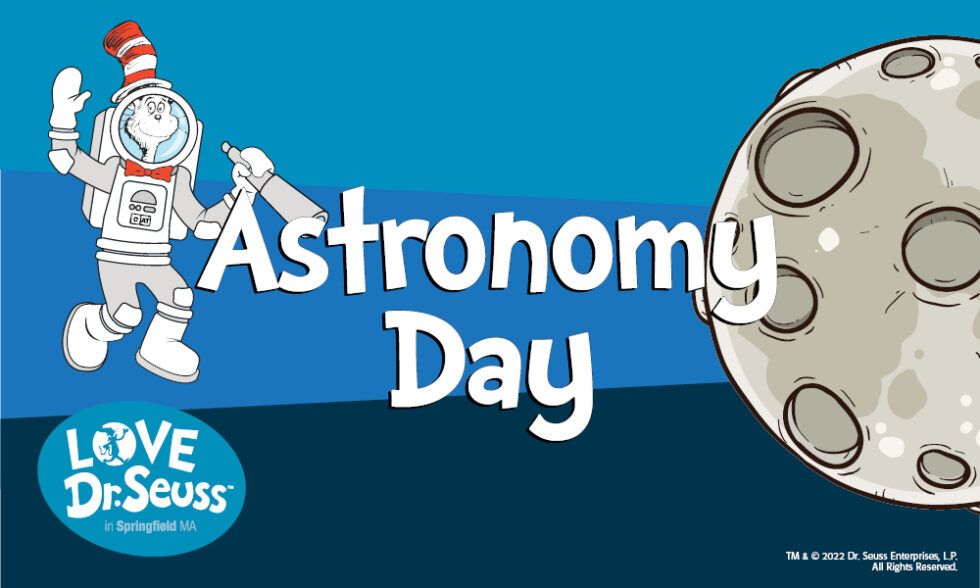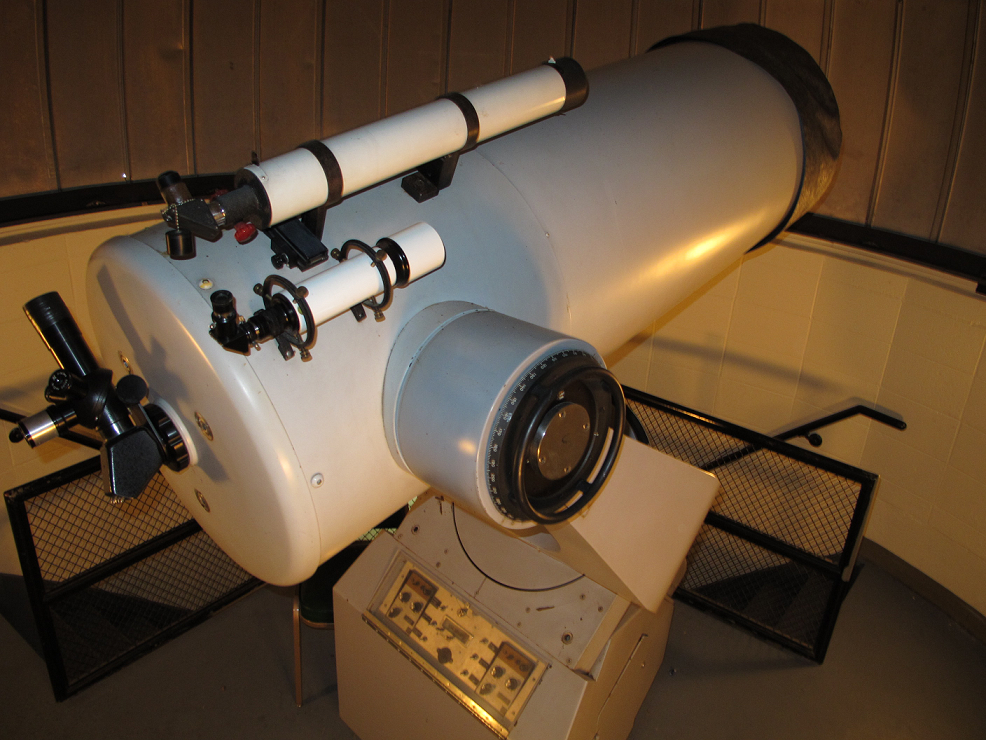


Part of a nationwide, grass-roots movement to bring astronomy to the people! Enjoy cosmic activities including hands-on science experiments, rooftop observatory tours, and more. Free with museum admission (unless noted otherwise).
Highlights and ongoing activities of the day are included below.
Today’s Highlights
Dave Kelly, Master Telescope Maker, 11 am-3 pm
Dave Kelly’s telescopes are works of art in addition to being fully functioning telescopes. In case of fine weather, we will enjoy his masterpieces outside, for safe viewing of the Sun and the Moon. In case of clouds, we will display them inside along with a slide show demonstrating how they were built. Dave available to meet our visitors, answer questions, and encourage them to try their hand at building their own telescope. Quadrangle (Rain location: Science Workshop, Second Floor, Springfield Science Museum)
Observatory Tours, 11 am-12 pm and 3-4 pm
The Science Museum’s rooftop observatory was built and donated by amateur astronomers from Springfield! Tour the observatory to see our twenty-inch Schmidt-Cassegrain telescope and take in one of the most beautiful views of Springfield from the dome’s opening. Meet in Astronomy Hall, Second Floor, Springfield Science Museum
Features of the Moon, 1 pm
Our moon is covered with craters, mountains peaks, valleys, bays, and even lava seas! Work together to learn about how these unique features formed and use Moon Sand and simple tools to try to replicate them. Led by Richard Sanderson, Adjunct Curator of Physical Science and Jenny Powers, Director of the Springfield Science Museum. Please note: This activity has a firm start time with limited seating, please arrive a few minutes early to receive your materials and be seated. Tolman Hall, First Floor, Springfield Science Museum
Journey to Mars: Special Edition Live Planetarium Show, 2 pm
Tickets Required; additional fee
STEM Curator Kevin Kopchynski takes you on a virtual journey to Mars using full-dome simulations from NASA. Learn about the history of the Red Planet and enjoy breath-taking views of the Olympus Mons and a thrilling ride through the Vallis Marineris. Seymour Planetarium, Second Floor, Springfield Science Museum
Ongoing Activities, 11 am-3 pm
Meet the STARS Club
The Springfield STARS Club is turning 90 years old this year! Meet members who will share their interests or special collections, from meteorites to binoculars to astrophotography. Learn more about what the club does and how they’ve shared their love of the night sky with thousands of people in the last year. Astronomy Hall, Second Floor, Springfield Science Museum
Orbiting Object
How do the planets, asteroids, and moons stay in orbit in our solar system? What effects do they have on each other, any? Using a gravity well and balls of different sizes and density, our friend museum educators will help answer these questions and more about how our solar system works. Habitat Hall, First Floor, Springfield Science Museum
Make a 3D Leo the Lion
Create this special art project representing one of the zodiac constellations that appears during Spring and Summer. Using card stock and silver start stickers, make your own stand-up representation of Leo to take home. Habitat Hall, First Floor, Springfield Science Museum
Touchable Astronomy
Explore meteorites and the Museum’s new fully tactile moon model and learn more about our universe through touch. Explore our recent eclipse, constellations, a nebula, and galaxies all through touch at this table. Habitat Hall, First Floor, Springfield Science Museum
A Breath of Fresh Air
How does air get cleaned and refreshed on the International Space Station? How does urine get recycled into fresh water for the astronauts to use? Take part in this chemistry experiment to learn more about life on the ISS. Habitat Hall, First Floor, Springfield Science Museum
Spacesuit Cart
How can water boil with no heat? What materials are used to make a spacesuit safe for life outside of our atmosphere? Join our volunteer docent to learn more about how human life is sustained in outer space, and what technology makes this possible. International Space Station Exhibit, Second Floor, Springfield Science Museum

Astronomy Day is a national event that was started in 1973 by Doug Berger, the president of the Astronomical Association of Northern California. His intent was to set up various telescopes in busy urban locations so that passersby could enjoy views of the heavens. Over the years, Astronomy Day has grown into an international event, with hundreds of museums, planetariums, and astronomy clubs participating. The Springfield Museums have been celebrating for many years, introducing thousands of people to the stars.
